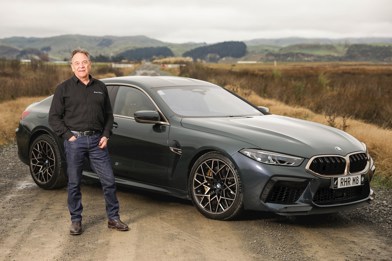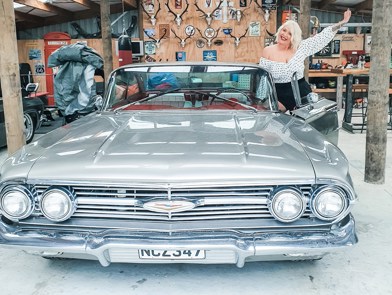The stocky, chrome-wheeled Rhino is a fitting illustration of SsangYong’s desire to be different.
That logic of standing out from the crowd normally sits at odds to the conservative buyers that normally buy into the double-cab ute segment. But, the Korea’s only entrant to the ute game — the nation’s best effort yet — aims to change that.
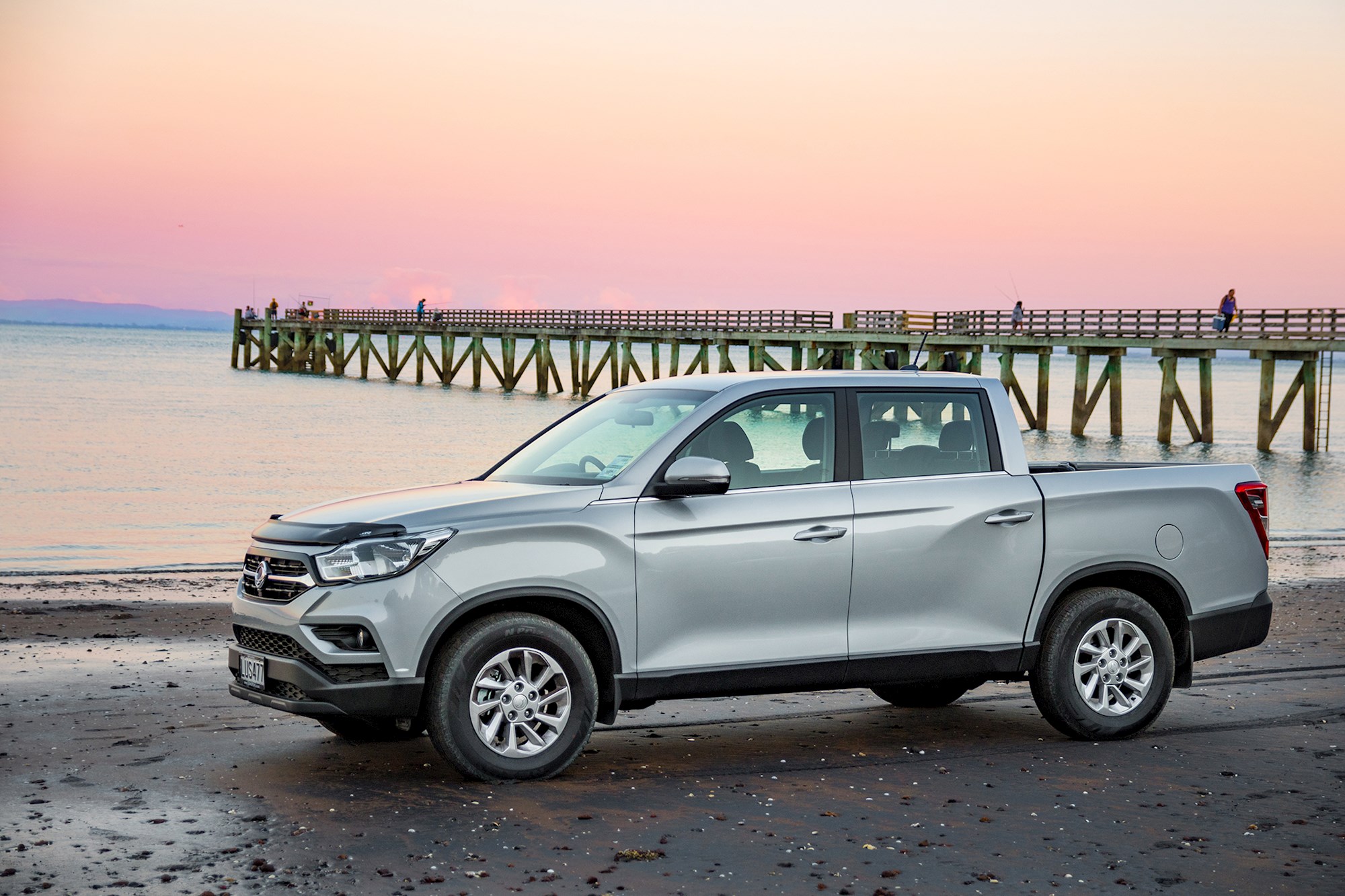
We were recently handed the keys of SsangYong’s four-wheel drive mid-spec Sport and top-spec SPR models (depicted in silver and red, respectively). Pricing for the Sport starts at $40,230, with the automatic priced at $42,520. The SPR meanwhile is automatic only, and is priced bang on $50,000.
The later’s pricing is particularly impressive, given that it’s over 10 grand cheaper (if not more) than similar range-topping models from most other brands. Of the mainstream brands, only Mitsubishi's recently launched Triton VRX can rival the Rhino's 50k price (although that price is meant to only be a limited-time introductory offer).
The powertrain is the same in both models; a 2.2-litre turbo-diesel making 133kW at 4000rpm and 420Nm at 1400–2800rpm (if you opt for the manual, you lose 20Nm), allowing for a towing capacity of 3500kg.
The main differences between the Sport and SPR revolve around looks, luxury, and technology. The SPR gains a set of 20in ‘Sputtering’ wheels, roof rails, Nappa leather seats that are heated and ventilated in the front row, heated mirrors, keyless entry, dual-zone climate control, a partially digital gauge cluster, and a 360-degree camera.
The SPR also adds side and curtain airbags, which sadly don’t come standard in the Sport — or, for that matter, in any other model in the Rhino range. There’s also no autonomous emergency braking on offer, and the fifth passenger has to make do with merely a lap seat belt.
The double-cab ute segment is one of the last to standardise some of these safety features, with vehicles like the much pricier Volkswagen Amarok skipping curtain airbags and AEB throughout its range. Hopefully SsangYong has remedies for these shortcomings in the pipeline.
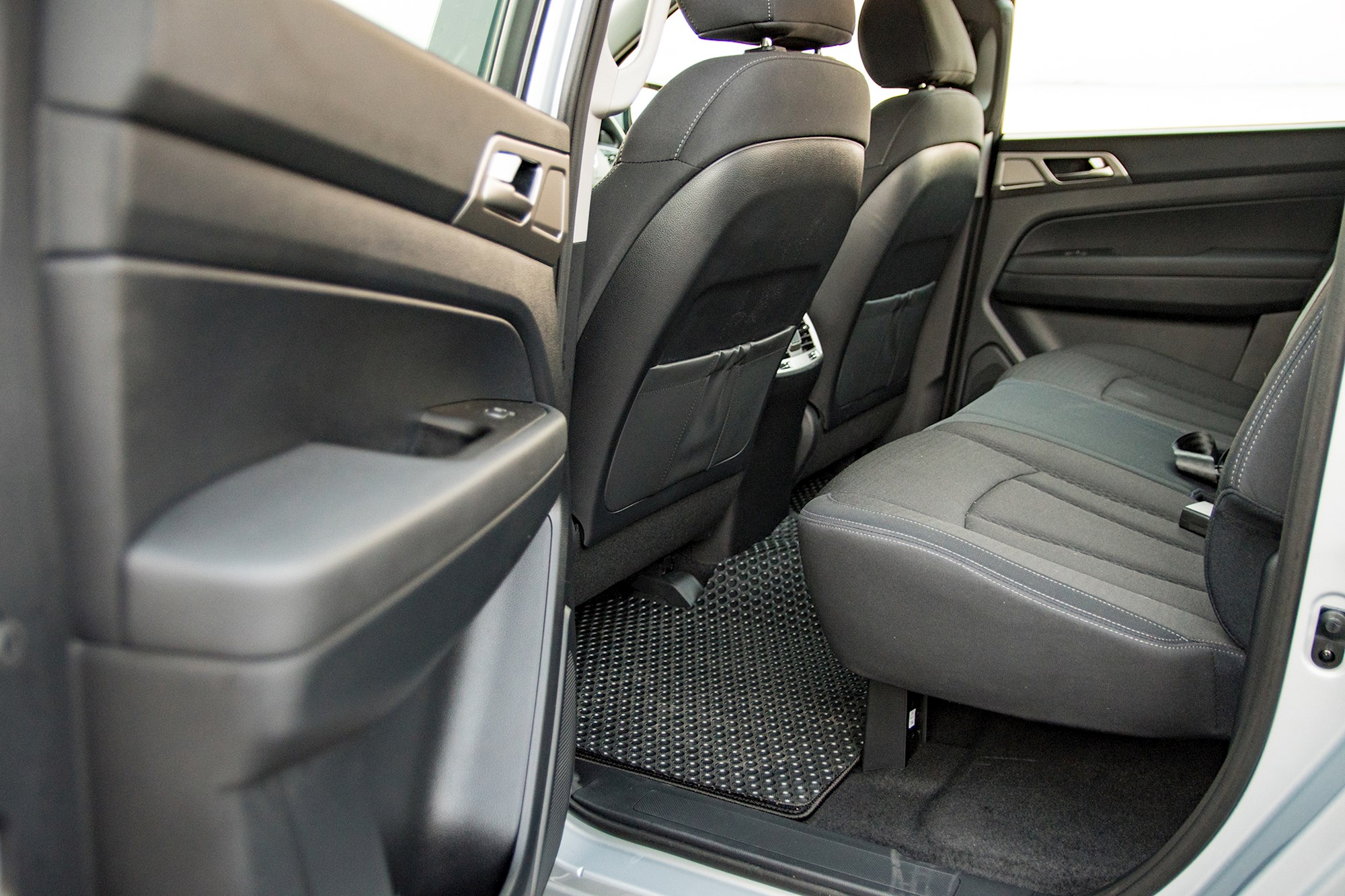
What makes these issues a particular shame is the fact that in every other respect, the Rhino is one of the best passenger utes on the market. This was a point we made at the national launch, and it’s one that only grew in legitimacy in our two-odd weeks of quality Rhino time.
It’s arguably the most enormous and liveable cabin of any in the double-cab segment, with 90mm of extra width over the Ford Ranger helping accommodate greater shoulder room and making the fifth seat relatively adult friendly. Rear knee and leg-room is especially commodious. As we’ve talked about in the past, this stems largely from the Rhino being based on its Rexton sibling’s underpinnings — making it fundamentally different in its layout.
Sitting behind the driver’s seat when adjusted to my personal position, knee, feet, and leg-room was ample; a fact I’ve never quite been able to replicate in a Ranger or Toyota Hilux. It’s comfortable back there too, thanks to a generously angled seat-back. While Facebook-addicted friends in the back seat don’t get USB ports to plug their phones into, they do get a pair of air vents.
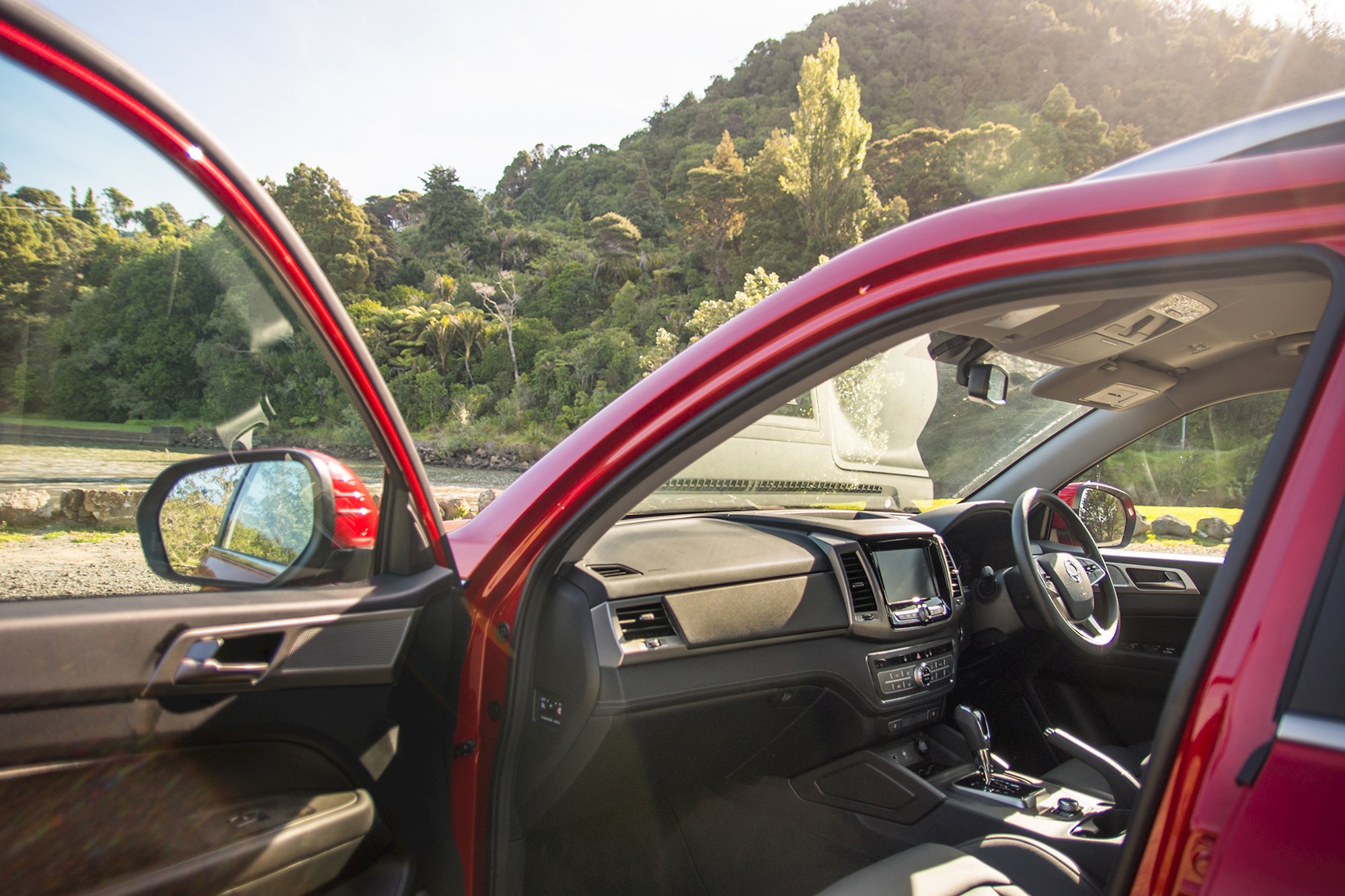
Apart from having enough room to swing a possum, the Rhino's cabin is also a generally pleasant place to sit. Soft-touch surfaces line the top and front of the dash-board, and knurled controls are scattered along the dash and centre console.
It's a comfy space that is also surprisingly smart, with little things like a ridge in the cubby at the base of the dashboard that you can stand a phone on top of and doors that extend over the top of the sills — keeping the sills clean so that occupants don't get their legs dirty getting in or out.
It's worth noting too that the SPR's 360-degree camera is excellent; far clearer than many others; including the one fitted to the Mazda CX-5 Takami that we recently tested.
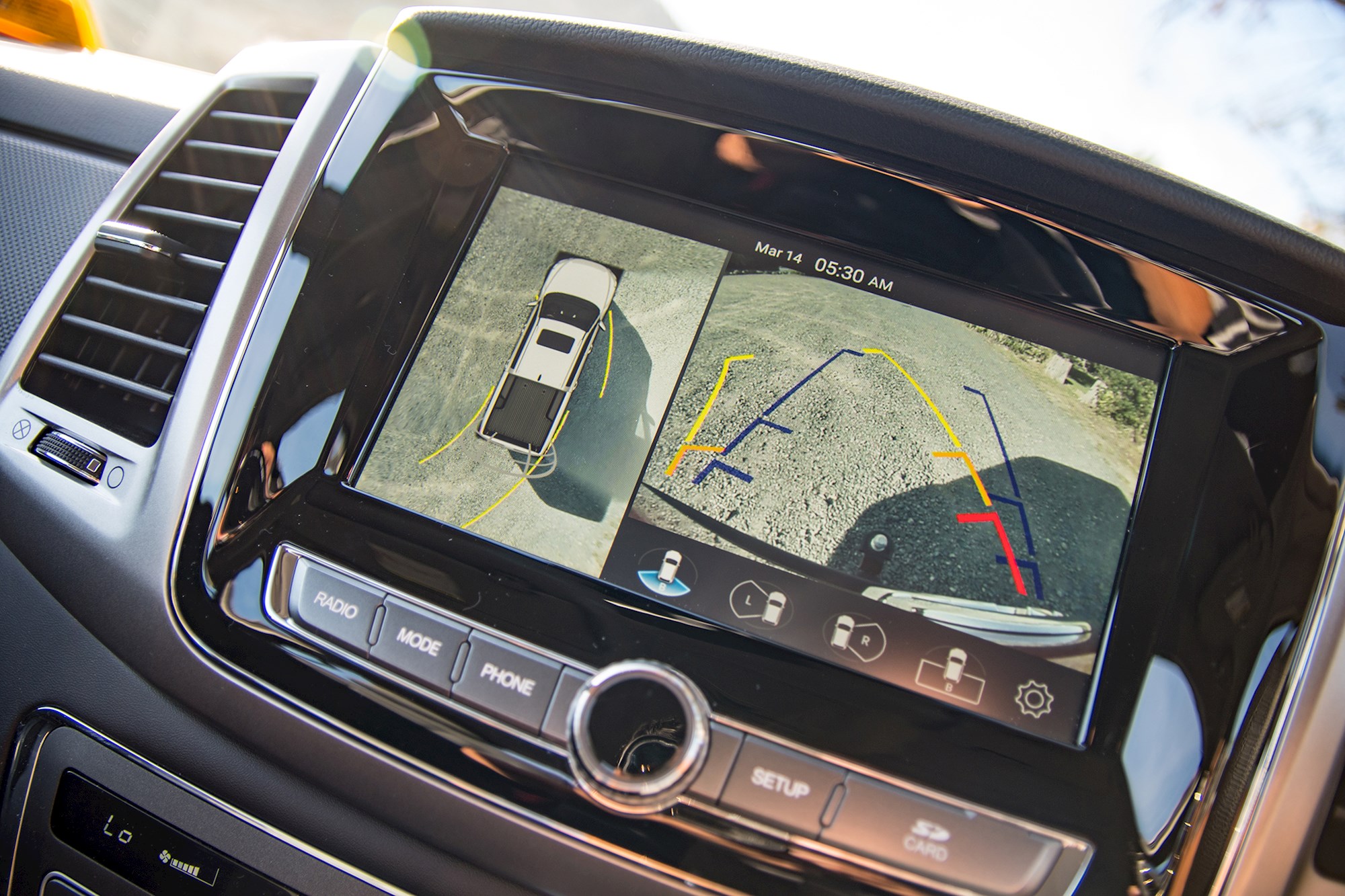
Nothing's perfect, of course. The Sport and SPR's 8.0-inch touch screen can be difficult to traverse, and doesn't include satnav (although to its credit, it has Apple CarPlay and Android Auto, through which drivers can access alternative map systems). And while the materials are largely nice, the tops of the door cards are made hard plastic.
But still ... this is a ute, not a Bentley.
The trade-off for all the aforementioned space is a short rear bed space that’s only 1300mm long — the shortest in class. But to those considering this a deal killer, a bonkers 1610mm long-bed version will land here shortly.
Behind the wheel is where all the action happens, and the Rhino is largely pleasing. Its nuggety dimensions and gaping glass-house make it easy to place and park, while relatively precise steering makes for a simple and relatively car-like drive.
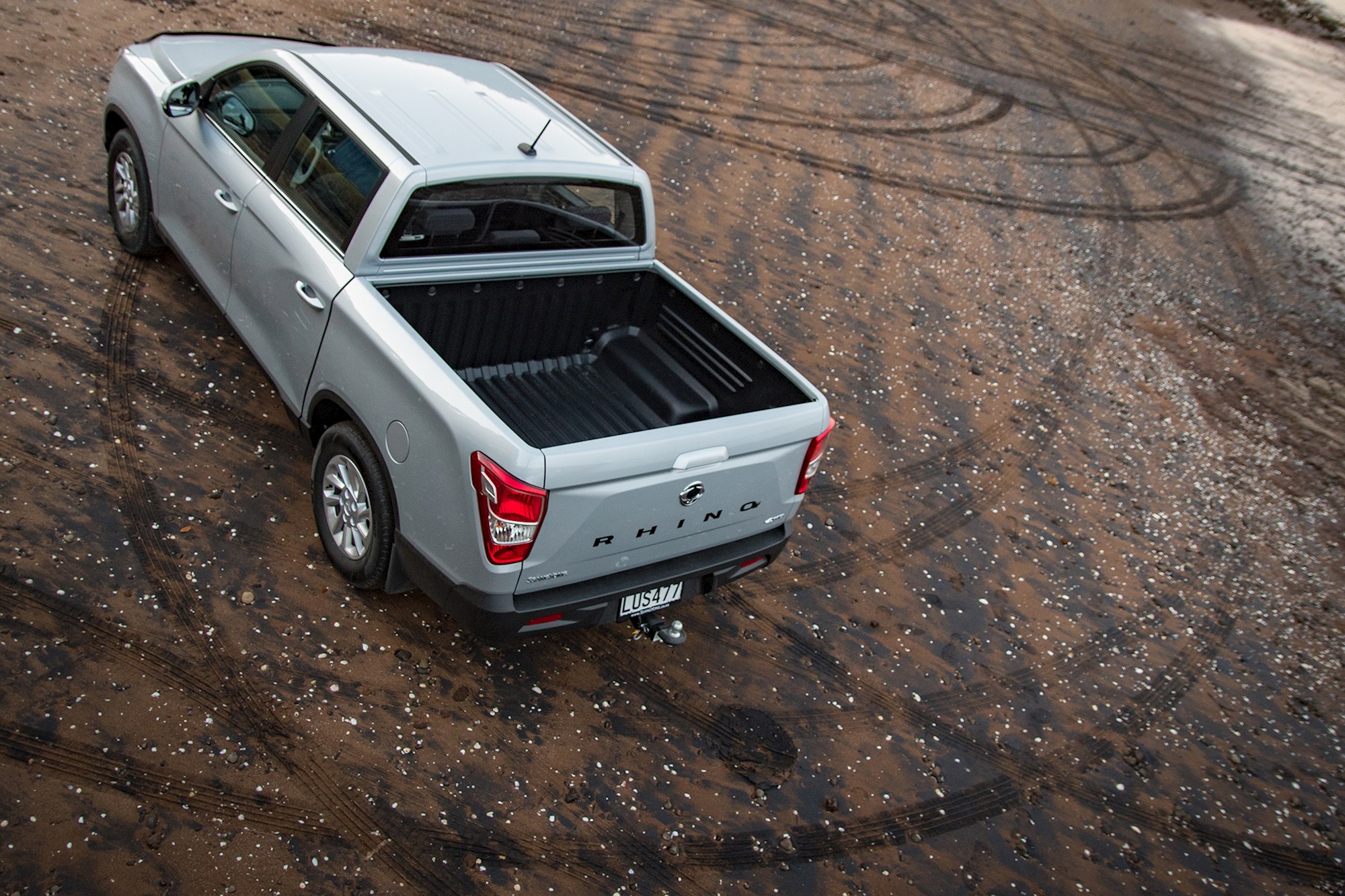
We found the suspension — wishbone in the front, five-link and coil springs in the rear — to be a bit brittle on broken surfaces. This was particularly true in the SPR, thanks to its rapper-video wheels. The long-bed version will swap the coils for traditional leaf springs, and we're interested to see whether that changes anything.
The engine is unit that lacks torque on paper, but feels surprisingly punchy. While SsangYong claim a fuel economy of 7.9L/100km (Sport) and 8.6L/100km (SPR) in the two utes respectfully (the difference likely accounting for the SPR’s wheels and weight), our combined economy in both utes instead hovered around 10L/100km.
The 2.2-litre engine's best attribute is, however, how silent it is.
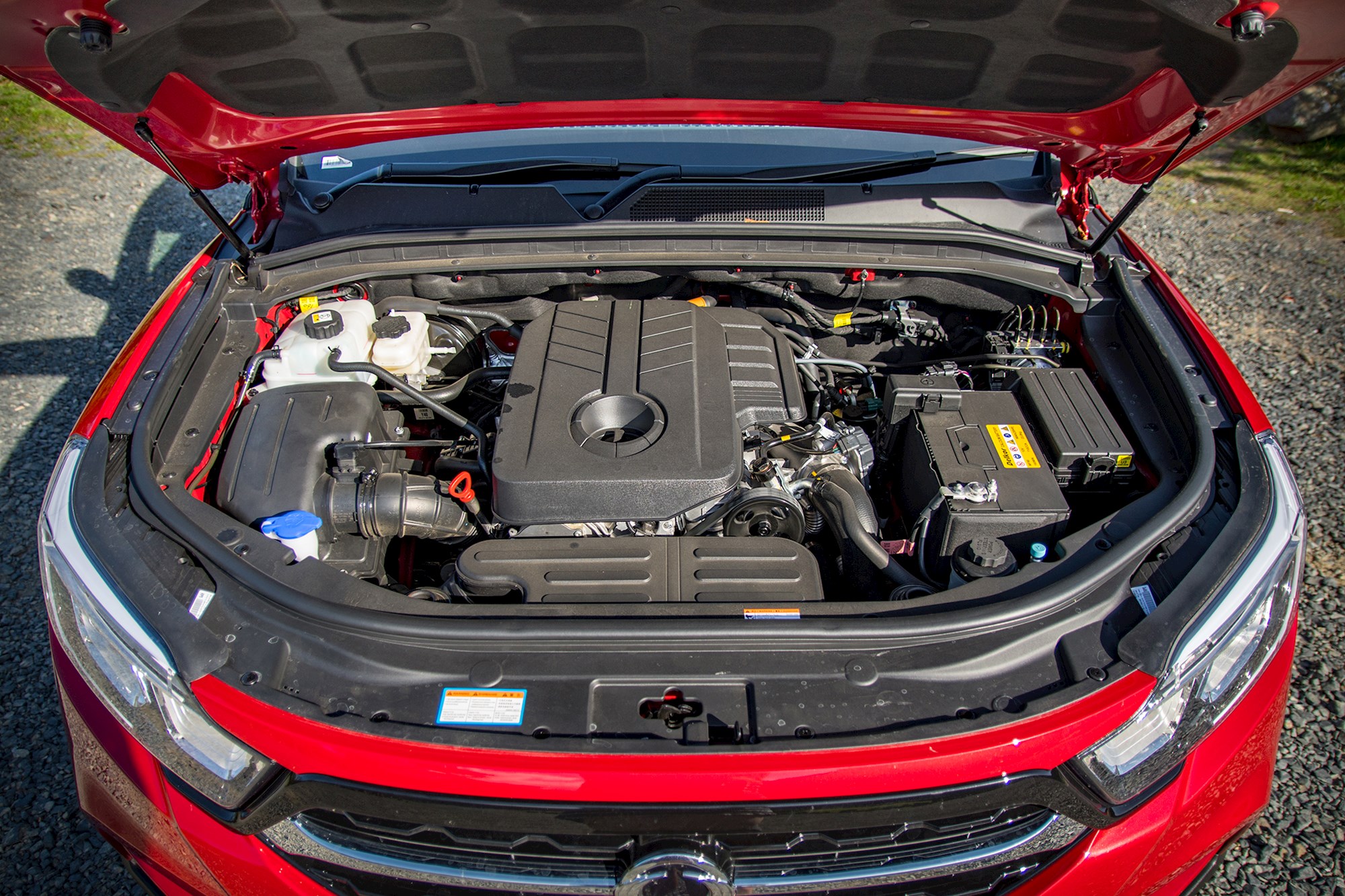
Start-up and sound at low revs is muted, to the point that even my normally hyperactive pooch regularly struggled to notice the SsangYong’s diesel engine note when it was being reversed up the driveway. The quiet engine is further complemented by an equally quiet cabin, which does a bang-up job in minimising tyre roar and wind noise.
Combined, the Rhino is probably the most peaceful ute money can buy. Apart from a Mercedes-Benz X-Class, perhaps.
Now, if you’re reading this thinking that SsangYong has turned the corner and morphed into some kind of vehicular Cinderella, know that the Rhino still packs a requisite assortment of weirdness.
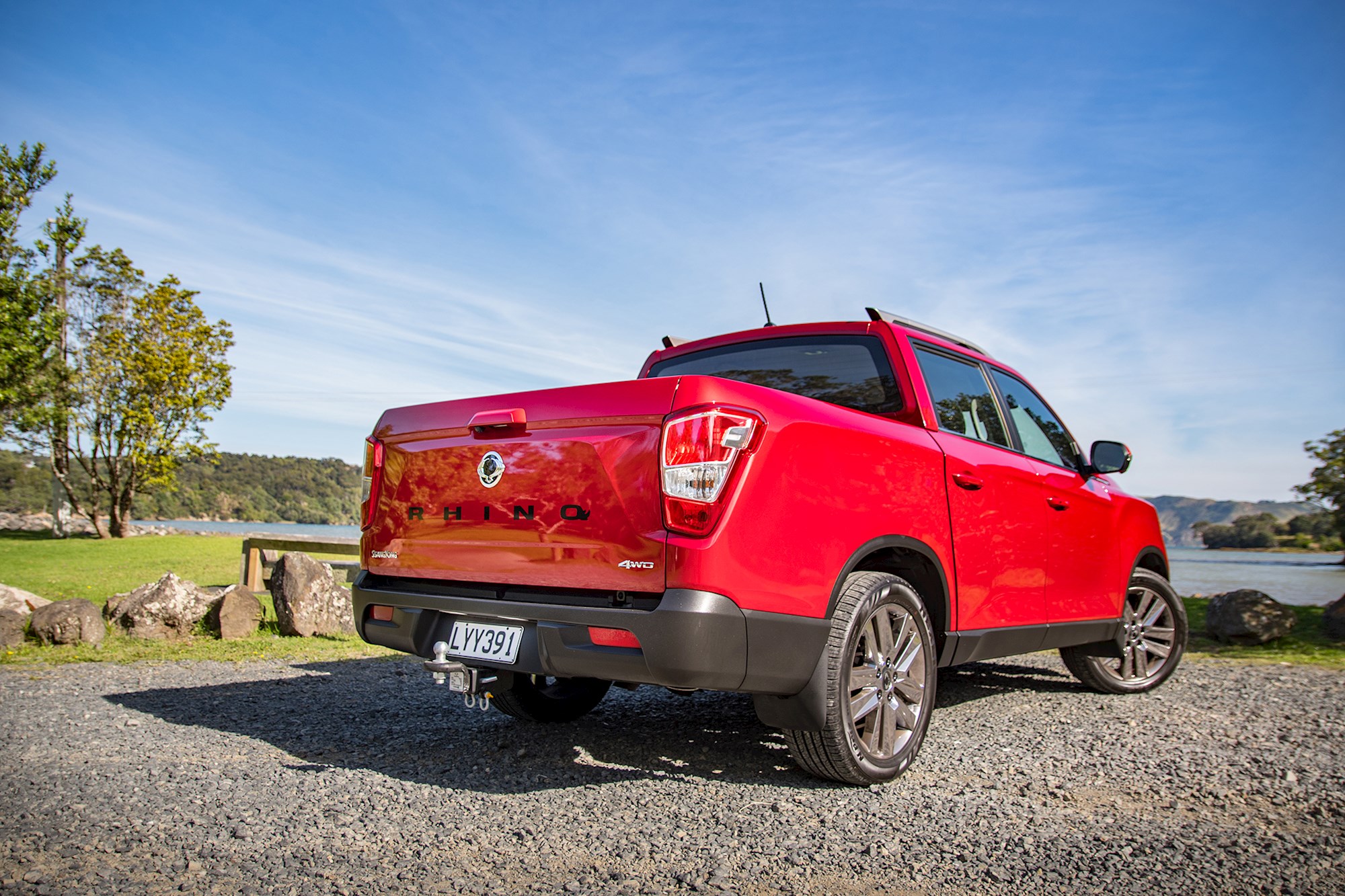
For one, unlike most other cars it won’t automatically resume playing phone’s Bluetooth audio when you switch it on. Instead you need to manually select your phone first with each drive, which can become a chore. While most of the switch-gear is lovely to use, the indicator and wiper stalks are among the cheapest-feeling on any new vehicle. And the way the outline of the back doors crosses the C pillar to meet the bed is both odd to look at and a potential finger-jamming risk.
Without a doubt though, the most bizarre feature on the Rhino is the ability to change the sound of the indicators. There are four traditional bing-bong noises and a fifth option of … chirping crickets. It's an ideal trinket for quickly flicking on when a passenger’s joke falls flat, I suppose.
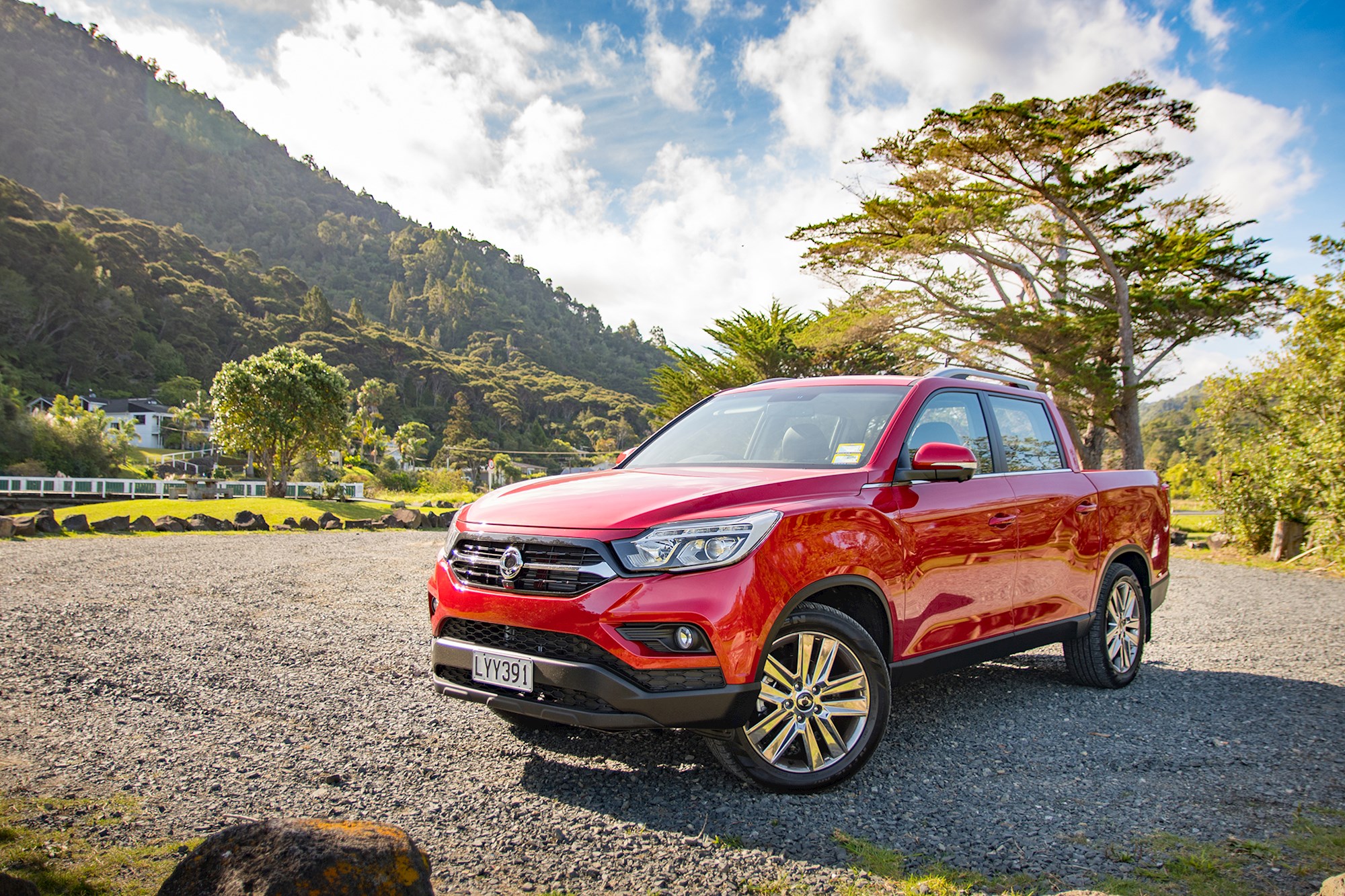
But if you can stomach those mild quirks, you’ll find that the SsangYong Rhino is every bit the double-cab ute contender. In an era where people are expecting their double-cab workhorse to also function as a family hauler, the Rhino is one of the few options on the market that can claim to exceed at the latter.
Loaded with value, toys and surprise; this is the game-changing vehicle SsangYong has long been chasing.
2019 SsangYong Rhino Sport/SPR 4WD
Price: $42,530 (Sport), $50,000 (SPR)
Pros: A family ute standout, noise refinement, value, interior quality
Cons: Jittery ride, safety tech, small bed (for now)























